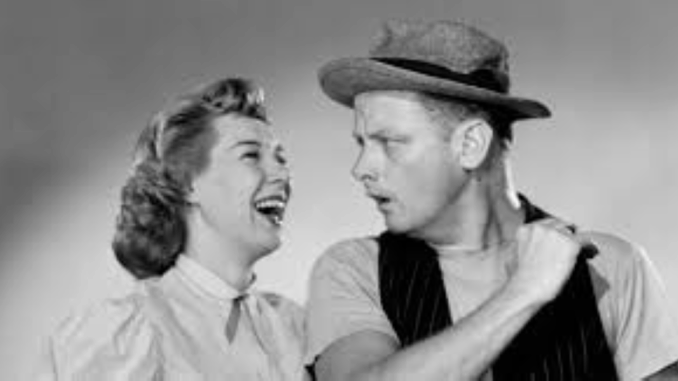
Why Trixie Norton’s exit from television became one of Hollywood’s quietest mysteries
Fame, Then Silence
In the mid-1950s, Joyce Randolph was one of the most recognizable women on television. As Trixie Norton — the sharp, cheerful wife of Art Carney’s Ed Norton — she was part of America’s favorite foursome on The Honeymooners. Her face appeared in living rooms across the country every Saturday night, immortalized in black and white. And then, almost overnight, she was gone.
When The Honeymooners ended after its “Classic 39” episodes, Randolph didn’t join the other cast members in later revivals or specials. She gave few interviews, turned down reunion offers, and lived quietly out of the spotlight. For years, fans speculated: what happened to the woman behind Trixie Norton?
Tired of the Typecasting
Those close to Randolph say the answer lay in frustration. Early in the show’s development, Trixie had been written as a feisty ex-dancer with a quick wit — a perfect comic foil to Audrey Meadows’ no-nonsense Alice. But as the scripts evolved, her character was softened, often relegated to the background while Ralph and Norton took center stage.
Randolph reportedly approached the writers and producers, asking for more to do. “A little more spark,” she called it. She wanted Trixie to be funny, smart, and human — not just “the wife upstairs.” But the producers were firm. Audiences, they said, preferred Trixie as “sweet and safe.”
For an actress who’d started in live theater and loved bold, character-driven material, the limitation was suffocating. After the 1956 season, she quietly stepped away, telling friends she’d rather wait for a role that challenged her than repeat one that diminished her.
Hollywood’s Short Memory
Randolph hoped to return to the stage, but the industry moved on quickly. Casting directors saw her as Trixie — and only Trixie. Despite her talent, she found herself boxed in by the same success that had made her famous. Offers dwindled, and she gradually withdrew from acting altogether.
Unlike some of her co-stars, Randolph never chased fame or public attention. She settled into a quieter life, raising a family and appearing only occasionally at fan conventions. Yet she remained proud of her work — proud of the laughter, the legacy, and the warmth that The Honeymooners brought to millions.
A Quiet Legacy, Loudly Remembered
When Randolph reappeared in the 1980s for retrospectives and interviews, audiences welcomed her with standing ovations. For many, her presence symbolized a return to television’s golden age — a reminder of a time when humor was simple, genuine, and full of heart.
She often expressed gratitude that people still remembered her after so many years away. “I only did one season,” she once said, “but it was the right one.”
Her story is one of quiet rebellion — of an actress who chose dignity over typecasting, contentment over constant exposure. In walking away, Joyce Randolph ensured that Trixie Norton remained exactly as fans remembered her: bright, loyal, and forever young in the glow of a black-and-white screen.
The Forgotten Honeymooner No More
Today, television historians call Joyce Randolph “the heart that completed the quartet.” Though she disappeared from Hollywood’s glare, her contribution endures. Every time The Honeymooners reruns play — and audiences still laugh at the antics of Ralph, Alice, Ed, and Trixie — a little piece of Randolph’s quiet courage flickers to life again.
She may have walked away from fame, but she never walked away from history.
